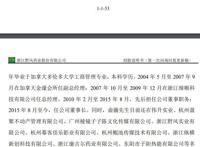子谦译文|创业教什么:六种主流创业理论的对比研究(26)
2023-06-03 来源:旧番剧
设计思维是“一种运用设计师的敏感性和方法,将人们的需求与技术上可行的、商业策略可以转化为客户价值和与市场机会相匹配的学科。在逻辑的最高层次上,设计思维是“应用整合思维来解决可靠性与有效性、开发与探索、分析思维与直觉思维之间的冲突的”。设计思维是基于用户研究的迭代、非线性和人性化的实践,这个过程始于用户体验到的问题,再深入理解它并创建一个可能的解决和测试方案,最后是对结果的反思。正是通过这种创造、测试和学习的过程,创业者才能更好地完善他们最初的创业想法。在模型的中层,设计思维包括五个步骤:(1)从用户的角度来专注于作品的问题并深刻理解它;(2通过对分散信息的感知来定义问题;(3)通过不同方法生成一个的可能的解决方案,,并结合对这些解决方案的想象见解来解决这个问题;(4)原型化一个解决方案,并突出其优点和缺点,以确定新的途径;(5)通过征求用户对原型方案的反馈来测试解决方案,以获得更好的理解。在最低层次的策略中,设计思维提供了用户访谈、物理原型、问题阶梯、创新流程图和设计思维集锦等工具,作为整个过程的辅助。
3.2Step 2: comparing six entrepreneurial methods across the levels of logic, model, and tactics
从逻辑、模型和策略三个层面比较六种创业方法
For the level of logic, Table 1 illustrates several critical assumptions about the nature of the venture creation process, specified through theoretical and philosophical axioms. Examples include the notion of uncertainty (McKelvie et al. 2011), the view of the future in relation to the level of skepticism of the predictability of outcomes (Tetlockand Gardner 2016) , and the nature of the process as discovery or creation (Alvarez and Barney 2007). All the entrepreneurial methods that were reviewed explicitly or implicitly address the logic of their prescriptions. For example, business planning employs scenario building as a way to “predict” the future, while effectuation relies on heuristics for controlling present conditions while creating future ones. Knowledge and evidence are other notions central to the level of logic in almost all of the surveyed entrepreneurial methods. It is through the process of knowledge gathering by interacting with the external world that entrepreneurs engage in a process of learning (Cohen and Levinthal 1990) and eventually reduce the uncertainty they face.
猜你喜欢
动漫推荐
免责声明:动漫番剧数据来源网络!本站不收费,无vip,请勿上当!
www.jiufanju.com-旧番剧





















